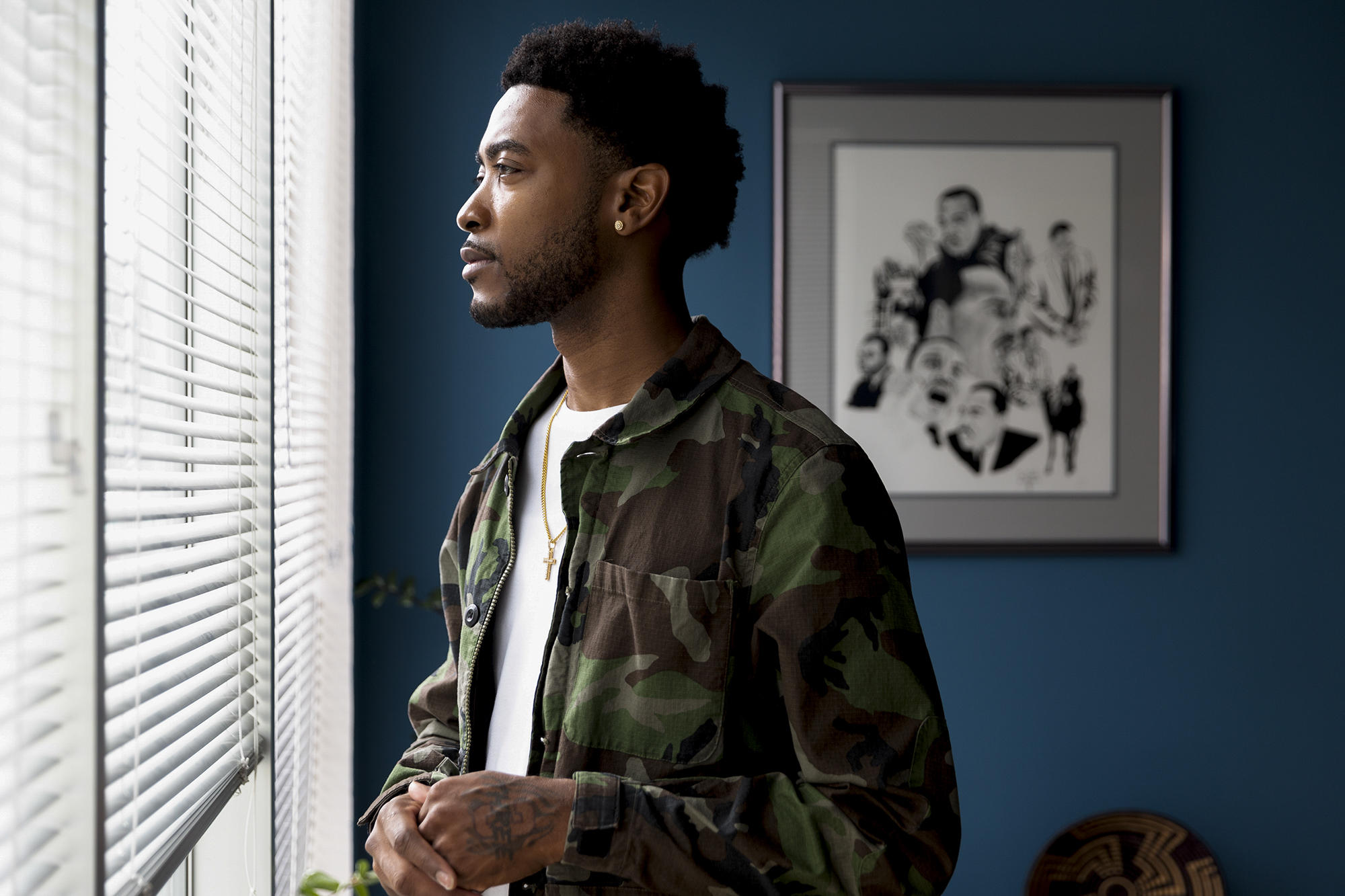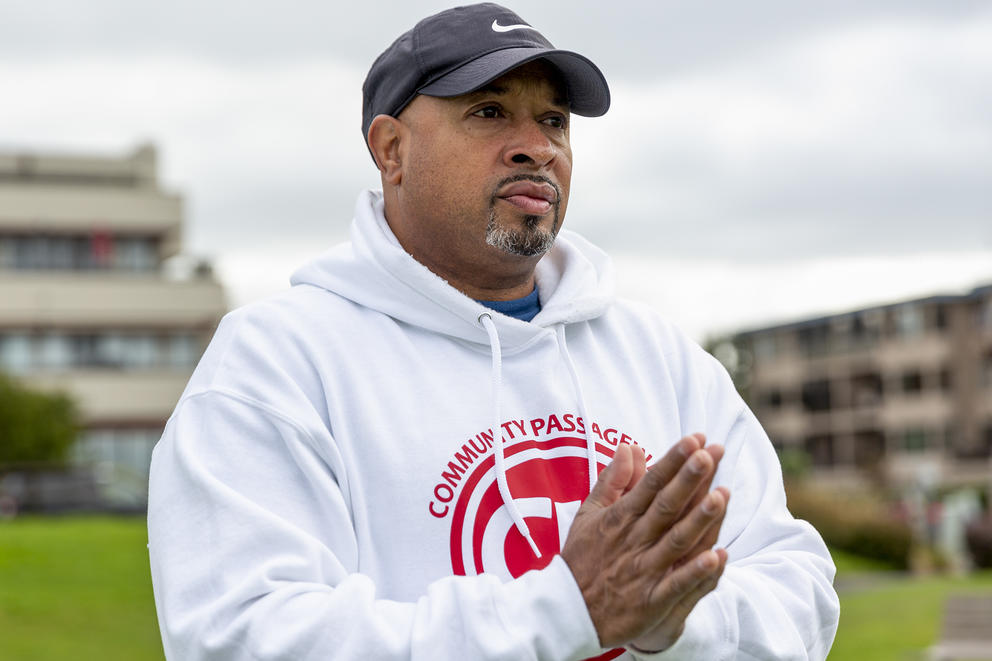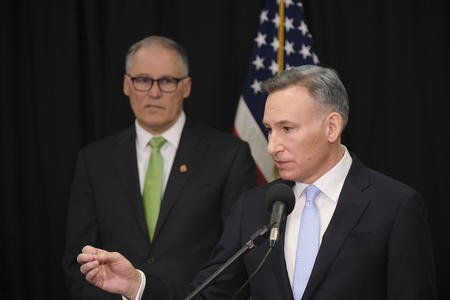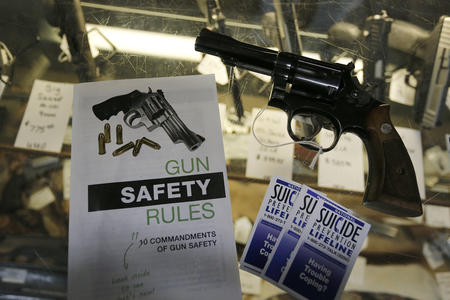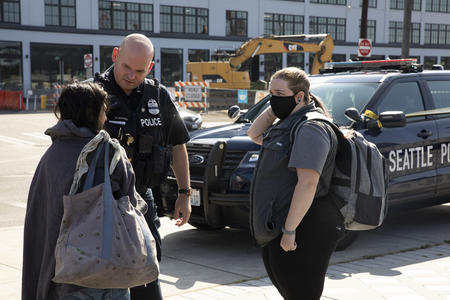Nabors is a community ambassador with Community Passageways, one of a handful of mentorship organizations staffed almost exclusively by Black men and women close to the violence that is taking an outsized toll on Seattle’s Black community. The peer mentorship done by Community Passageways and its contemporaries has been promoted as the region’s best tool to break the cycle of violence that has seen dozens of teens and young men killed during the past year.
As a community ambassador, Nabors has helped pull young men out of the cycle, connecting them with employment and viable alternatives to incarceration. But the death of friends like Taylor, who Nabors played basketball with almost every day growing up, adds devastating weight to the already difficult work.
“I feel like we’re saving so many people, but then it almost seems like a slap in the face when you see stuff like this happening,” Nabors said. “It’s happening in such a short time span. I’ve lost people before, but never this many back to back to back to back.”
In 2020, more Americans died by gun violence than in any year in at least two decades. This year is on track to be even worse. While the number of shootings in Seattle and King County remains low compared with other large American cities, the region has seen an increase in violence that mirrors the rise in other metropolitan areas.
The recent shooting trends were outlined in a report released by the King County Prosecuting Attorney's Office in July. In the first half of 2021, 196 people were shot. Of those shootings, 42 were fatal — a 48% increase compared with recent years. The analysis didn't include suicides, which make up a majority of gun deaths, or people shot by police. King County Prosecuting Attorney Dan Satterberg described this as an “unprecedented time of violence.”
The violence has left many wondering why shootings are rising in the first place. There’s no simple answer, but researchers and community members point to a combination of pandemic-induced social and economic stress, easy access to firearms and the closure of community institutions like schools. Much of the violence stems from conflicts involving young men, though some is domestic violence, which has increased during the pandemic but typically affects older demographics.
Thomas Abt, a senior fellow at the Council on Criminal Justice, urged caution while discussing the rise in violence. While the current trends are alarming, they’re still well below the historic highs of the 1980s and 1990s. The violence shouldn’t be dismissed as insignificant, he said, but it also shouldn’t be viewed as a “crime wave” or cause for panic.
“Crime trends, unfortunately, [are] quite messy business,” Abt said.
What’s clear, though, is that the pain is disproportionately being felt by the region’s Black communities.
The demographic data collected by the King County Prosecuting Attorney’s Office paints a stark picture: 85% of the victims from the first half of this year were men or boys, and 46% were younger than 25. Eighty percent of the victims were people of color. Almost half were Black in a county where just 7% of residents describe themselves as Black.
The rise in shootings has prompted calls for investment in community-driven violence prevention programs, which experts say are key to addressing the crisis. Counselors working for violence prevention programs — who have often experienced street violence themselves — meet with young people who may find themselves involved in shootings, either as a victim or aggressor. They attempt to steer young people away from violence and interrupt escalating disagreements before they turn deadly.
“It’s our best strategy by far,” Satterberg said. “Because they know who is having a beef with who, they can help to defuse and de-escalate situations.”
By analyzing the social networks of victims and shooters, researchers in the Prosecuting Attorney’s Office are able to identify individuals they believe are most likely to become victims or perpetrators of gun violence. The information is then given to groups like Community Passageways that have relationships within those social networks. Community ambassadors, including Nabors, then try to intervene and prevent violence.
Nabors works with two groups of young men. He meets with each man individually at least once a week to check in, talk about life and try to connect them with social services and employment opportunities. “I see them as just like my little homies,” he said. “The mistakes that you made, you can see that they’re going through similar things and you’re able to give better advice.”
‘We couldn’t shut down’
When the pandemic hit, schools, athletic organizations and other community institutions that previously provided structure closed. Community Passageways began holding one-on-one meetings in-person at parks and in front yards. Group meetings continued over Zoom and in meetups outside.
“We couldn’t shut down because the kids weren’t shutting down,” said Dominique Davis, CEO and founder of Community Passageways. “They weren’t stopping what they were doing in the streets. They still needed some direction.”
Davis — a former football and track coach who many affectionately refer to as Coach Dom — said the loss of sports programs during the pandemic was especially harmful. Davis said he’s seen athletics provide an outlet for anger and frustration, where youth find structure and encouragement. When you take those things away and send teens home with iPads and instructions to stay inside, he said, bad things happen.
“Now all of a sudden we had hundreds and hundreds of new young people jump — jump off the porch is what we call it — they jumped off the porch and right into the street,” Davis said.
The loss of employment was also damaging. People with full-time work are much less likely to get involved in conflicts, Nabors said. There simply isn’t enough time.
“Spend 40 hours a week at work … by the time you’re done with that, you’re tired, you don’t want to go out in the neighborhood,” Nabors said. “I feel like the pandemic definitely took a real, real toll.”
The pandemic has also made it difficult to prosecute the perpetrators of gun violence as restrictions prompted by the pandemic have slowed the court system. Satterberg said his office has more than 250 open murder cases that have been filed and are waiting to be heard or resolved.
Online ‘beefs’ and real-world bloodshed
The increase in violence has prompted some to focus on gang activity. Last month, King County Councilmember Regan Dunn introduced legislation that would reestablish a gang unit in the King County Sheriff’s Office. The unit was shelved in 2020.
But Satterberg said his office stopped closely tracking gang membership and activity years ago. It’s just not that helpful. While King County does have groups of young men engaged in cycles of retaliatory violence, Satterberg said, the groups are fluid and loosely defined. Many of the more organized groups that Satterberg was tasked with tracking as a gang prosecutor in the early 1990s have been dispersed by gentrification, he said.
“We don’t see tightly organized structures here,” Satterberg said.
Much of the current violence is unorganized and connected to personal conflicts, Satterberg said. Social media also plays an increasingly large role. Insults that might have faded away now have an audience of thousands. People often feel that their reputation has been hurt and that the only way to rebuild it is through violence, Satterberg said.
Davis described recent social media conflicts involving taunts, pictures of guns and even a video of a rival’s grave being desecrated. When people were stuck at home with only Instagram, Snapchat and Facebook as their primary means of communication, the problem was amplified.
The pandemic “gave people a lot of free time, a lot of internet time as well,” Nabors said. “A lot of these beefs are starting on the internet, a lot of back and forth going on social media. There’s too much time on people’s hands.”
Easy, essentially unfettered access to guns also plays into street violence. A record number of Americans purchased guns during the pandemic, but the relationship between those legal gun sales and the rise in firearm violence is complicated.
In Seattle, the police department processed 2,275 background checks related to gun sales in March 2020, more than four times the average during preceding months. Sales spiked again that June during protests after George Floyd’s murder by Minneapolis police. The number of monthly background checks has since decreased but is still well above historical averages.
A lot of the guns tied to shootings aren’t obtained legally, said Kate Kelly, director of the Washington state Office of Firearm Safety and Violence Prevention. The weapons are often obtained by theft or through illicit gun sales.
While he views regulating new gun sales as important, Satterberg agreed that most of the guns used in shootings are coming from secondary markets. Many were stolen in burglaries or car prowls and have been passed around for years. During a July press conference, interim Seattle Police Chief Adrian Diaz called on gun owners to keep their firearms locked up so they can’t be stolen.
Floyd’s murder and the protests that followed had a noticeable impact on trust and perceived police legitimacy. In Seattle, calls to 911 dropped sharply in June 2020. They’ve risen since, but have yet to return to normal levels. Abt said more research is needed, but there's a lack of evidence to the claim raised by some that reforms to the criminal justice system led to the rise in violence.
“There are many cities out there that did not have bail reform that did not defund the police, did not take any of these reforms and still experienced this increase in violence,” Abt said. He noted that rates of property and drug crime actually decreased in 2020 and 2021.
A community-centered response
Local leaders are turning to organizations like Davis’ to stem the violence. The city of Seattle plans to spend $2 million to support the Regional Peacekeepers Collective, a program made up of various community groups, including Community Passageways.
“We know that violence is the result of many failed systems and societal disparities,” Seattle Mayor Jenny Durkan said during a July press conference announcing the investment. “And because, in many instances, the government for decades shirked responsibility, we are called on at this moment to invest in resources to right the wrongs created by those failed systems.”
The weekend after Durkan’s announcement, a string of unrelated shootings across Seattle left four people dead and seven injured. In a joint press conference with the police chief the following day, Durkan argued for an approach combining community-led solutions and policing.
While the model Community Passageways uses has been shown to be effective, existing groups’ networks don’t cover the entire county. Satterberg said there remains a need to build up credible messenger programs focused on Latino youth and the children of recent immigrants from Africa.
It’s impossible to know what’s driving the current surge in gun violence, but, Davis said, the root causes are clear: racism and underinvestment in Black and brown communities. The recent boost to community programs like his are helpful, Davis said, but ultimately not enough.
“We can’t keep putting Band-Aids on bullet wounds,” Davis said.
He argued that Seattle and King County need to respond to gun violence with the same resources it has used to respond to other crises, like homelessness and the pandemic. If white kids were getting shot at this rate, he said, there would already be hundreds of millions invested in stopping it.
Despite the challenges, Community Passageways has been making progress and connecting youth with full-time jobs, resources and alternatives to jail. In spite of the grief and loss, Nabors said he’s determined to continue the work.
“I’m definitely motivated,” Nabors said. “The more stuff happens, the more I get motivated, and I’m definitely not stopping anytime soon.”

